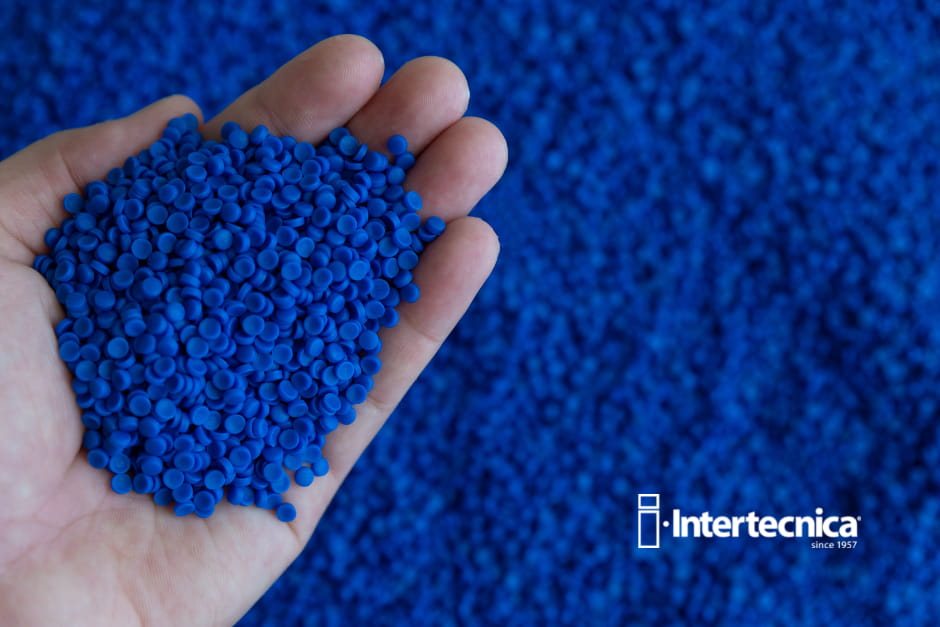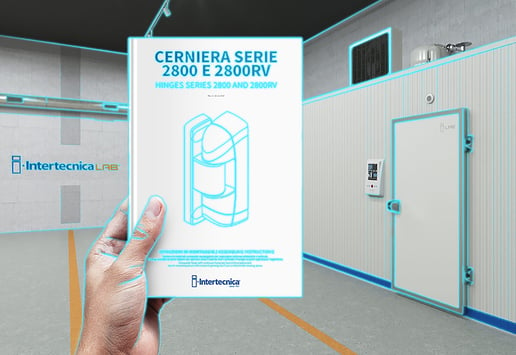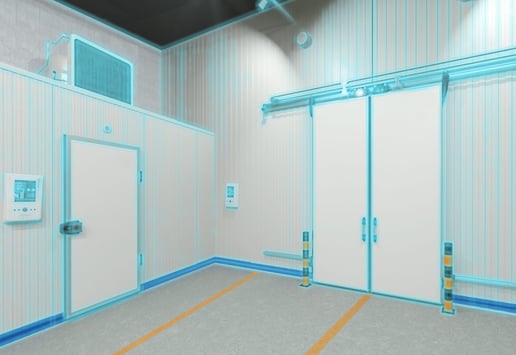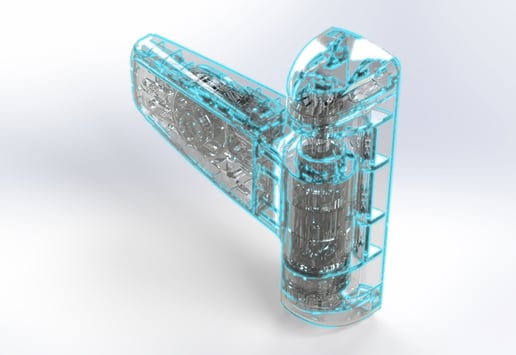The components of a cold room door can be made of various materials that guarantee different levels of performance in terms of cold-proofing, durability, antimicrobial capacity and so on.
In some cases a specific material has to be used due to the constraints imposed by the regulations, but in other cases you can freely choose between products according to your needs and requirements.
The components for the doors of cold rooms can be made of 3 main types of materials:
- Composite plastic materials
- Stainless steel
- Other types of steel (galvanised, die-cast…)
Each of these categories of materials has different characteristics and can therefore be used successfully in relation to the performance you want to achieve.

The advantages of composite plastic materials
Plastic materials for industry is a very large family which includes many polymers and is the subject of constant development.
The focus of research in this area is on new materials that are lighter but can also guarantee better performance in terms of tenacity and resistance to mechanical stimuli. These features make plastic components perfect for applications in the refrigeration sector, as they ensure the mobility and efficiency of a cold room door. In fact, these components must be able to ensure good performance over time despite being subjected to continuous stresses and operating in an environment with very low temperatures and the presence of humidity. Plastic is not prone to corrosion and is therefore particularly suitable for this context: it is in fact highly resistant when used in certain composite materials, such as glass fibre-reinforced nylon, which Intertecnica has chosen for some of its components. Other plastic materials, instead, can be used successfully for the production of specific components, such as hinge ramps: in this case Intertecnica uses a specific self-lubricating acetal resin which guarantees excellent performance in terms of ease of sliding.
It is also worth remembering that plastic materials are not thermally conductive, with obvious advantages in terms of the efficiency and cold-proofing of a cold room.
The advantages of composite plastic materials, however, do not stop here: a component made of this material is in fact also lighter and less expensive than a steel component, and tends to be easier to process on an industrial scale. As a result, production becomes more responsive and the products can be made in a short time and customised without overly extending the process.
Lastly, the particular processing of composite plastic materials can also improve the functionality and ergonomics of the finished product, since using a material that is less complex to process allows greater flexibility for the designer.
Don't miss out on the latest news from the world of Intertecnica.
The advantages of steel
Steel is the material traditionally used for the production of components for cold room doors, and is able to guarantee excellent performance in terms of strength, tenacity and stability.
Due to its specific characteristics and widespread use throughout the world, this material is still preferred in some countries for the production of cold room doors despite the continuous technological evolution of composite plastics.
Stainless steel or other types of steel (such as die-cast steel mixed with other components) guarantees excellent results in terms of durability, resistance and antimicrobial capacity. This last point is one of the main reasons for the widespread use of steel in the food industry, since a material that is very easy to clean and on which microbes cannot proliferate has obvious advantages in this regard.
Combined solutions for maximum efficiency
As we have seen, the use of steel for the components of cold room doors is still widespread, although research in the field of plastic materials is providing interesting alternative solutions which are well worth taking a look at.
For this reason, Intertecnica continues to provide components in composite plastic material and in steel, but also combined solutions which allow you to get the most out of each type of material.
In the case, for example, of a hinged door with a sliding ramp, steel can be used for the production of the fixed bodies, while the pin and ramps can be made of plastic material, which has better properties in terms of friction resistance. This solution improves overall performance and also allows you to keep down your costs without compromising on quality.
Solutions of this type, which combine different materials, allow us to take into account all the needs of our customers in terms of efficiency, safety, price, and ease and speed of supply of parts. They are therefore important to consider, in view of the choice of increasingly advanced and high-performance products.





